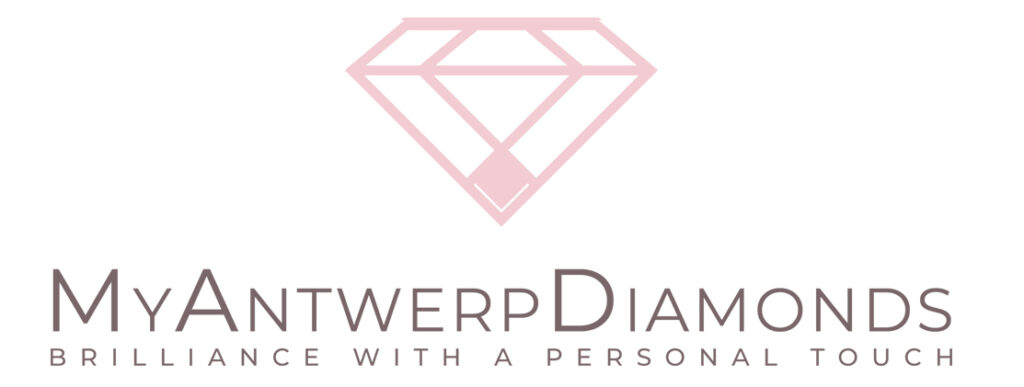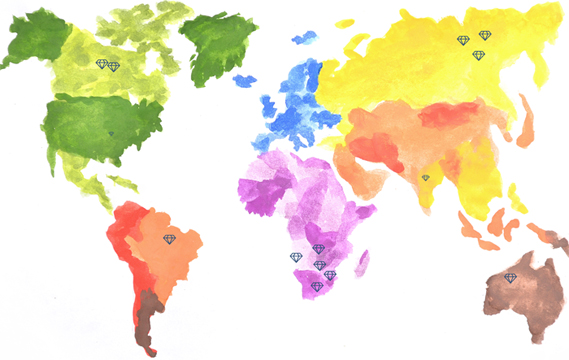1. Botswana 🇧🇼
Region: Jwaneng and Orapa mines
Known for: High-quality white diamonds, large rough stones
Notes: Botswana is one of the world’s top producers by value, with diamonds often sorted and sold through De Beers. The country is a global model for ethical sourcing and beneficiation.
2. Russia 🇷🇺
Region: Yakutia (Siberia) – ALROSA mines
Known for: High-clarity white diamonds, sometimes with slight tints
Notes: Russia has some of the largest known reserves and produces high volumes of round brilliant-quality material. However, diamonds from Russia may be subject to sanctions or import restrictions in some countries.
3. Canada 🇨🇦
Region: Northwest Territories (Diavik, Ekati, Gahcho Kué)
Known for: Exceptional clarity, often colorless or near-colorless
Notes: Canadian diamonds are known for their traceability and strict environmental practices. Many are laser-inscribed and come with origin certificates.
4. South Africa 🇿🇦
Region: Kimberley, Cullinan, Venetia
Known for: Historic large stones; mix of white and fancy color diamonds
Notes: South Africa is famous for legendary finds like the Cullinan Diamond and still produces rough stones of excellent size and quality.
5. Angola 🇦🇴
Region: Catoca mine and others
Known for: Large stones, including high-value white and brown diamonds
Notes: Angola is a rising source with one of the world’s largest kimberlite operations.
6. Democratic Republic of Congo (DRC) 🇨🇩
Region: Kasai Province
Known for: Industrial-grade diamonds
Notes: DRC is among the largest producers by volume, but most output is lower-grade and used for industrial purposes.
7. Australia 🇦🇺 (now closed)
Region: Argyle mine (Western Australia)
Known for: Rare fancy pink, red, and violet diamonds
Notes: The Argyle mine closed in 2020, making its colored diamonds even more valuable and collectible.
| Region | Known For | Market Importance | Notes |
|---|---|---|---|
| Yakutia, Russia | Large, high-clarity diamonds; major Alrosa mines | One of the world’s top producers | Cold, remote conditions; strong state involvement |
| Botswana | High-value diamonds (Jwaneng, Orapa) | Top producer by value | Transparent governance; key to Botswana’s GDP |
| Northern Canada | Conflict-free diamonds (Diavik, Ekati, Gahcho Kué) | High-end niche market | Environmentally and socially responsible mining |
| South Africa | Historic mines (Cullinan), large rough stones | Declining in global share | Known for famous diamonds (e.g. Cullinan Diamond) |
| Angola | Large, alluvial and kimberlite diamonds (Catoca, Lulo) | Rapidly growing contributor | Political risk and artisanal mining challenges |
| DR Congo (Kasai) | Industrial and alluvial diamonds | High volume, mostly industrial | Widespread artisanal mining with less transparency |
| Australia (Argyle) | Rare pink diamonds (now closed) | Former major source | Argyle mine closed in 2020; pink diamonds now very rare |
| Brazil (Minas Gerais) | Historical source, some alluvial production | Low today, historically important | Also known for black carbonado diamonds |
| India (Panna) | Small-scale production; historical Golconda region | Minor producer today | Golconda produced legendary diamonds like the Koh-i-Noor |
| USA (Arkansas) | Tourist-accessible public mine (Crater of Diamonds State Park) | Negligible globally | Only country with a public “find-and-keep” diamond mine for visitors |
Key Pages: Create & Customize Jewelry
Key Pages: Diamond Jewley From the Atelier
Essential Diamond & Jewelry Education
Important Links: Support & Policies
MyAntwerpDiamonds.com /
Some email responses from us may be filtered as spam or blocked altogether. To ensure you receive our emails, please provide your telephone or WhatsApp number for verification.




